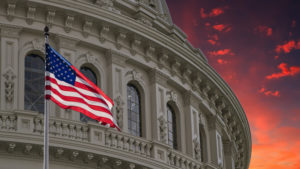Ethics & Trust
Poynter's Coverage of Ethics & Trust
‘You don’t report anything unless you know what you’re talking about.’
The networks mostly stuck to using careful language about what actually happened while also describing the gravity of the situation
The answer: Employing local journalists and focusing on solutions and specifics, according to a news organization called Global Press
The way to earn trust in our journalism is not more information, it’s connection
A recent Poynter Summit on AI, Ethics and Journalism challenged leaders to dream big and solve ethical challenges
Journalists could be more transparent. News consumers deserve to see the fullest version possible of the evidence
Related Training
NewsU Self-directed Course
This course is designed to help journalists understand the applications of Title IX, how to navigate it, and what kinds of reporting can be done.
Start anytime
Application not required
Sarah Brown
Free
Webinar
Learn what news audiences don’t understand about how journalism works and look for opportunities to demonstrate credibility by explaining news processes, coverage goals and journalism ethics.
Start anytime
Lynn Walsh
Free
This course is free thanks to the generous support of the Knight Foundation.
Webinar
Get ready for your first newsroom job by covering the basics of newsgathering, interviewing, media law, ethics and diversity
Start anytime
Barbara Allen
$29.95
NewsU Online Seminar
Be part of the conversation to set the highest journalism standards for reporting election results and voter turnout in the 2020 election.
Replay on demand
Angie Drobnic Holan
Free for selected participants
Thanks for support from the Craig Newmark Center for Ethics & Leadership at Poynter, Craig Newmark Philanthropies and Google News Initiative
NewsU Webinar
Learn three decision-making tools to find the most precise words to ensure that all subjects and sources are described with dignity.
Replay on demand
Cristi Hegranes
Free
This $29.95 webinar is free thanks to the Ethical Journalism Network.
NewsU Self-directed Course
This course gives journalists and journalism organizations a toolkit to navigate the ethical dilemmas inherent in newsgathering, reporting and publishing and an ethical decision-making process that yo
Start anytime
Application not required
Bridget Donovan, M.Ed.
$TBD
On Poynt
Learn a framework for your evaluating your editorial promise to readers
Replay on demand
Application not required
Kelly McBride
Free
On Poynt
Doris Truong and Steve Bien-Aimé discuss how to prioritize diversity in your newsroom, even during a pandemic.
Replay on demand
Application not required
Doris Truong
Free
On Poynt
Join Cheryl Carpenter for tips on how to work with your team during this turbulent time.
Replay on demand
Application not required
Cheryl Carpenter
Free
On Poynt
Kelly McBride explores ethical challenges newsrooms face during the pandemic.
Replay on demand
Application not required
Kelly McBride
Free
Webinar
PolitiFact journalists explain the nuts and bolts of impeachment, lessons to be drawn from past history, and the current political dynamics journalists and citizens need to know.
Replay on demand
Angie Drobnic Holan
$14.95
Webinar
Empower your journalism organization to demonstrate credibility and earn trust with this series of five webinars led by Trusting News founder and director, Joy Mayer.
Replay on demand
Joy Mayer
Free
This course is free thanks to the generous support of the Knight Foundation.
Webinar
This $29.95 course is available free of charge thanks to the generous support of the Harnisch Foundation.
Geanne Belton
Free
Webinar
In this course, you’ll examine your own assumptions about race and ethnicity.
Application not required
Keith Woods
Free
Joy Mayer
Free
This $29.95 webinar is free thanks to the support of the McCormick Foundation.
Webinar
Build trust instead of distrust.
Replay on demand
Kirsti Kenneth
Free
This $29.95 webinar is free thanks to the generous support of NewseumED.
NewsU Webinar
Earning consumers' trust in journalism.
Broadcast date: Oct. 26, 2017
Joy Mayer
FREE
This $29.95 webinar is free thanks to the generous support of the Robert R. McCormick Foundation.
Self-directed Course
Learn to identify credible news resources and evaluate information you find on the Internet and elsewhere.
Start anytime
Pam Hogle
$19.95
NewsU Webinar
Learn guidelines and standards for fair and accurate reporting on American Muslims
Broadcast date: May 3, 2018
Dalia Mogahed
Free
This $29.95 webinar is free thanks to the generous support of the Democracy Fund
NewsU Webinar
Reporting hate and extremism.
Broadcast date: Feb. 14, 2018
Heidi Beirich
Free
This $29.95 webinar is sponsored by The Southern Poverty Law Center and is offered at no cost.
NewsU Webinar
The constitutional rights of the media when covering the United States government.
Broadcast date: Jan. 27, 2017
David Bralow
FREE
This $29.95 webinar is free thanks to the generous support of Pepper Hamilton LLP.
Webinar
Build or refine your process for making ethical decisions — before you're faced with a tough call on deadline.
Kelly McBride
Free
This course is free thanks to Ethics and Excellence in Journalism Foundation.

























